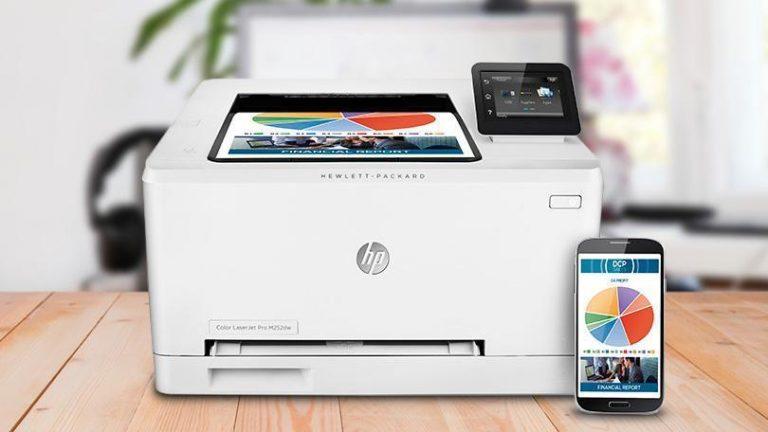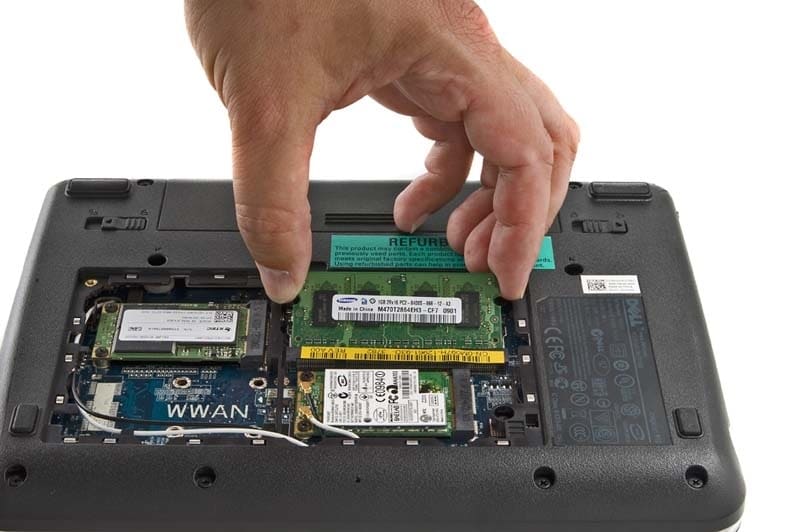Did you know that the amount of space that you have on your computer’s system physical memory, or Random Access Memory (RAM), affects its performance? Your computer system’s RAM is not a permanent storage access system, in comparison to your hard drive space. That would be defined as storage.
Everything that you save on your hard drive is saved when you turn your computer on or off. Every so often you may need to install more memory, or RAM, to better enhance your computer’s operating efficiency.
Why RAM is Important
Think of it this way: Your hard drive is data and program storage. Every program or piece of data that you save is stored on your hard drive. Your computer’s RAM is basically a digital work area to retrieve data and programs from the hard drive, open them and allow you to interact with them. It is essential to have enough free memory cache space available on your computer’s RAM for it to operate efficiently and as fast as possible. Over time, your computer’s RAM will incrementable lose more space, or memory. It may become cluttered with extraneous data over time. When you don’t have enough RAM space or memory space, then your computer begins to work slower and may even freeze now and then. In this article, I will give you ideas and tips for installing more RAM onto your computer to enable it to work faster and more efficiently. However, before getting into all of that, let’s discuss what RAM is, the importance of RAM as physical memory space and the multiple ways that RAM makes your computer work better.
What is RAM?
Random Access Memories are computer chips or memory modules that used for the near instantaneous retrieval of information. If enough storage space is available, data can be retrieved from your RAM in fractions of a second. RAM’s have direct access paths to your computer’s central processing unit or the CPU. When you operate your computer, programs are opened in RAM which enables your computer’s processor to retrieve, open and manipulate such information as you see fit.  Having enough available free space for memory, your RAM, is what also allows your data processor to operate quickly and efficiently. Consider your RAM like an office desk. If the desktop is completely cluttered, it is hard and next to impossible to get anything done. When you free up space on your desk and remove the clutter, then you have enough free space, or memory, to perform tasks that need to be done.
Having enough available free space for memory, your RAM, is what also allows your data processor to operate quickly and efficiently. Consider your RAM like an office desk. If the desktop is completely cluttered, it is hard and next to impossible to get anything done. When you free up space on your desk and remove the clutter, then you have enough free space, or memory, to perform tasks that need to be done.
Ram Is All About Speed
The efficiency of your computer is based upon how fast the processor digitally manifests your inputs. Your RAM space is where data is temporarily stored when your computer is operating. Your RAM space dictates how much space is available for processing and how fast your computer will process your inputs. This space can become used up by extra data over time and by how much you use certain programs. It is essential to understand that some computer commands, functions, and tasks use up more memory space than others. Remember, the less RAM space that your computer has to work with, the slower it will become in processing your inputs.
Remember That Cluttered Office desk
Many entertainment and digital editing programs on your computer can use up a lot of space. Many software professional software programs such as Adobe Photoshop or Adobe Premiere Pro require a certain amount of memory in order to operate correctly. Ever notice how long it takes for a video game program to boot up on your computer? The amount of data required to process such programs, and RAM space, can be a lot. Photo and video editing programs use up a lot of space for optimal functioning, especially if there is heavy use of your computer’s graphics card. When you edit photographs and/or cut up and splice video clips, you need as much space as possible to keep the program running. Also, having several programs, windows or tabs running at the same time requires fast data flows and lots of RAM space. For the sake of comparison, your writing programs, like Word documents, take up relatively little RAM space for operation.
What Do You Want from An Upgrade?
Your RAM space is located on a RAM card unit that is inserted into a slot on the motherboard inside your computer’s CPU casing. There are several different kinds of RAM space available, and you need to know what you want of an upgrade before you begin installing new RAM cards into your computer. Installing the wrong kind or incompatible RAM cards into your computer can result in slower processing speeds, poor performance lower memory space than before or repeated operating malfunctions. To make sure that you are installing the best RAM upgrade for your computer, think about what you want out of an upgrade.  New RAM upgrades can offer a host of benefits. The speed at which your computer operates can greatly increase. The timing of program and application functions can become much more efficient. Make sure that the voltage requirements of the RAM upgrade are compatible with your computer. Do you know the maximum supportable memory capacity of the RAM card, your computer and if they are compatible? If it is a match, you will have much more memory to work with. If not, your computer might not turn back on. The point is that there may be several reasons for the slowing performance of your PC. The best way to give your computer a memory boost is to install new RAM yourself. It is not as hard as you may think.
New RAM upgrades can offer a host of benefits. The speed at which your computer operates can greatly increase. The timing of program and application functions can become much more efficient. Make sure that the voltage requirements of the RAM upgrade are compatible with your computer. Do you know the maximum supportable memory capacity of the RAM card, your computer and if they are compatible? If it is a match, you will have much more memory to work with. If not, your computer might not turn back on. The point is that there may be several reasons for the slowing performance of your PC. The best way to give your computer a memory boost is to install new RAM yourself. It is not as hard as you may think.
Step 1: Consider How Much More Space and Speed is Needed in An Upgrade
You have to know what brand of motherboard you have, how fast it is and how it interfaces with your computer’s central processing unit. The motherboard holds together your computer’s brain, the CPU, its hard drive disk and RAM space. To replace your RAM, you will be replacing the RAM slots that are connected to components of your computer’s motherboard. You will have to open your computer for this process carefully. It is essential to know the specifications of the RAM that you will be installing and upgrading your computer with. After all, you will need to sure that your motherboard and computer will be able to support the size and speed of the RAM upgrade you will be installing. The brand of your computer usually lists the specifications of your computer on their websites if you don’t know. Most digital era motherboards commonly support DDR4. A lot of pre-digital age PC probably supports DDR3. The MHz specifications vary from brand to brand. You also need to know if your computer is a 32-bit or 64-bit operating system. Check your specifications to know how much speed your computer can handle.
Step 2: Power Off
Disconnect all power cables to ensure against electric shock. Also, consider static electricity. A large jolt of static electricity can severely damage your RAM capacity. Take steps to wear rubberized shoes as you work as well.
Step 3: Gain Access to the RAM Slots
The motherboard contains several slots, with each slot responsible for a vital computer function. They are also known as DIMM slots. There should be 6 available slots. RAM slots are located nearest to the central processing unit. The CPU generates a lot of heat, so you will know it by the fact that it is adjacent to a fan-enabled cooling component. Identify the RAM slot and eject it. There are pressable tabs on both ends of the slot connected to the motherboard. Eject RAM smoothly.
Step 4: Insert Upgraded RAM
Line up the bottom of the RAM card with the slot on the motherboard. Once you are satisfied that the RAM card is aligned with the motherboard slot appropriately push down the RAM card gently but firmly until the card clicks into place. If you do not hear an audible clicking into place of the RAM, re-check your alignment of the RAM card into the motherboard. Whatever you do, don’t try to wedge the RAM card into the motherboard slot forcibly. All you will end up doing is damaging the motherboard and necessitate the need for expensive repairs.
Step 5: Confirm Placement
You have to confirm that the just-inserted RAM cards are properly aligned and firmly clicked into place. The tabs on either end of the slot on the motherboard should be firmly locked down after you insert the RAM card. Close up your computer. Reconnect all of the power cables.
Step 6: Turn on your computer
If it does not turn on, then something went wrong. Just re-do all of the preceding steps and make sure that all of the RAM cards are firmly in place. There you have it. You have now successfully upgraded your computer’s RAM space.
You’ve Installed More RAM, Now What?
If you’ve successfully increased your computer’s RAM, it’s also important that you optimize your computer to make sure you get the best use of your additional memory. Some software programs that have certain RAM requirements that have been constrained by your computer’s previous RAM limitations may begin to start using more memory than they used to because of your newly increased memory. Even your internet browser can take advantage of the newly added memory and prevent your computer’s performance from improving. If you have specific reasons for upgrading your computer’s memory, such as to meet certain hardware specifications defined by a software program, you want to make sure that you’re getting the most out of your newly installed memory.
How To Optimize Your Computer After Increasing RAM
The first step to ensuring your PC is optimized for increased memory is first and foremost, check to see how your computer’s programs are currently using your memory. This can be accomplished by opening up the task manager and seeing which programs are using the most memory. Programs that are using too much memory will appear in red.
Programs that can use excessive memory:
- Google Chrome
- McAfee Anti-Virus
- 3D Max
- Most Video Games
The task manager will also show every program on your computer that is running in the background. Even if you have nothing open on your computer, there still may be programs running that you don’t know about that could be using excessive memory that has no benefit to you, and these are the programs that not only need to be fully shut off but deleted as well.
How To End & Remove These Programs
Before you jump to ending all of the programs using your memory space, there are some that are critical to ensuring your computer’s basic operation. Ending the wrong task could result in an important program crashing or a hardware driver like your wifi driver being shut off. So to identify which programs are “bloating” your PC memory, click the details tab in the task manager. In the description column, it will provide a short explanation of what the process is currently running on your computer. Obviously, you do not want to end any tasks related to your computer’s hardware, but if any tasks say anything related to hosting, windows services etc, it’s best to leave those alone. Once you have identified what programs are using excessive memory, click End Task. Once clicked, Windows will force the program to quit and free up some space. However, some programs may pop back on, indicating it’s a required program in order for your PC to operate. If the program remains closed and you’ve identified this program is not a critical program for you, you need to completely uninstall it to preserve your computers hard drive storage space.
However, some programs may pop back on, indicating it’s a required program in order for your PC to operate. If the program remains closed and you’ve identified this program is not a critical program for you, you need to completely uninstall it to preserve your computers hard drive storage space.
How To Remove a Program from Windows
So now we need to remove the program from your computer completely. In Windows 10, this can be done by going to the start menu, clicking settings, then click Apps & Features. Choose the program you want to uninstall then click uninstall. Windows will then completely uninstall the program.
What About Computer Storage?
Storage can also be a cause for slowing down your computer, but not in the same case as it would with RAM. If you need to free up storage space on your computer, fortunately, it is much easier to do so as opposed to RAM. Freeing up storage space can come in many ways and forms. Expanding or freeing up hard drive space can be done by simply moving your files and documents onto an external drive or backing up to a cloud storage service such as Google Drive.
Conclusion
If you need to make your computer faster, upgrading your RAM can be the most effective way to increase your computer’s performance in a cost-effective way without having to purchase a new computer. If you’re not comfortable performing this task on your own, you can also have a local computer specialist assist you. Be sure to check your computer’s warranty to make sure that performing this task on your own will not void your warranty. Otherwise, it would be advisable for you to use a RAM stick, which will add RAM to your computer but can be accomplished through a USB flash drive and the help of windows Ready Boost.






